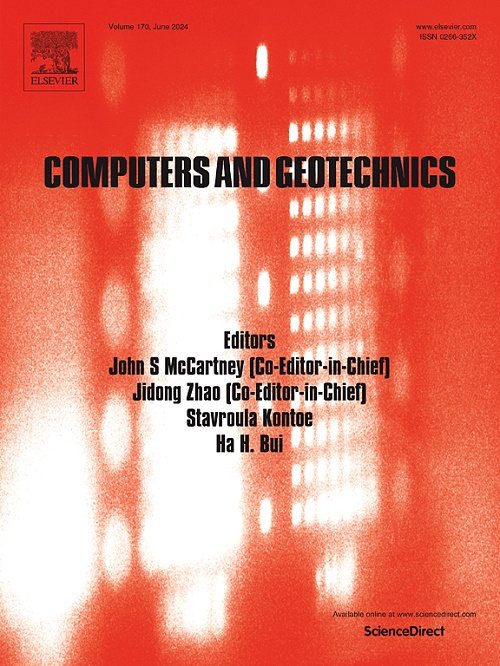Stress–dilatancy and micromechanics of sand under partially drained conditions
IF 5.3
1区 工程技术
Q1 COMPUTER SCIENCE, INTERDISCIPLINARY APPLICATIONS
引用次数: 0
Abstract
The mechanical behaviour of soil subject to shear loading or deformation is typically considered either completely drained or undrained. Under certain conditions, these drained and undrained scenarios can represent boundaries on the allowed volumetric strain. There is growing interest in exploring the response under intermediate conditions where partial drainage is allowed, particularly in the development of new approaches to mitigate the risk of liquefaction induced failure and the design of off-shore structures. This study uses the discrete element method (DEM) to investigate the effect of partial drainage conditions on the mechanical behaviour of spherical assemblies. Samples with different interparticle friction values are isotropically compressed and then subjected to undrained, drained, and partially drained triaxial shearing. The partially drained conditions are simulated in the DEM samples by applying a controlled volumetric strain that is a fraction of the drained volumetric strain. Results on loose samples indicate that allowing drainage enhances peak shear resistance and can also prevent liquefaction. Moreover, dense samples show a substantial increase in shear resistance when small changes in drainage and volumetric strain take place. The peak stress ratio and the stress ratio at the phase transformation point are insensitive to the drainage level. There is a linear correlation between the state parameter and the drainage level at the peak stress ratio and the phase transformation point. This observation could be used to trace partially drained stress-paths and could also aid the development of uncoupled constitutive models that account for drainage effects.
求助全文
约1分钟内获得全文
求助全文
来源期刊

Computers and Geotechnics
地学-地球科学综合
CiteScore
9.10
自引率
15.10%
发文量
438
审稿时长
45 days
期刊介绍:
The use of computers is firmly established in geotechnical engineering and continues to grow rapidly in both engineering practice and academe. The development of advanced numerical techniques and constitutive modeling, in conjunction with rapid developments in computer hardware, enables problems to be tackled that were unthinkable even a few years ago. Computers and Geotechnics provides an up-to-date reference for engineers and researchers engaged in computer aided analysis and research in geotechnical engineering. The journal is intended for an expeditious dissemination of advanced computer applications across a broad range of geotechnical topics. Contributions on advances in numerical algorithms, computer implementation of new constitutive models and probabilistic methods are especially encouraged.
 求助内容:
求助内容: 应助结果提醒方式:
应助结果提醒方式:


